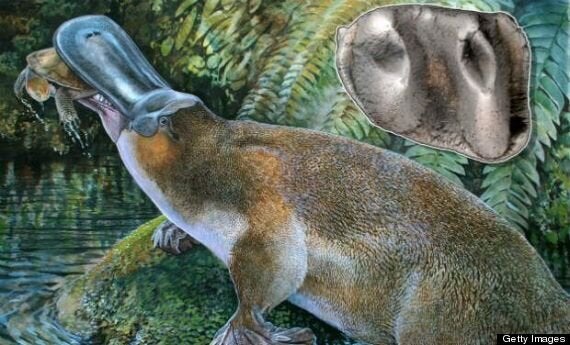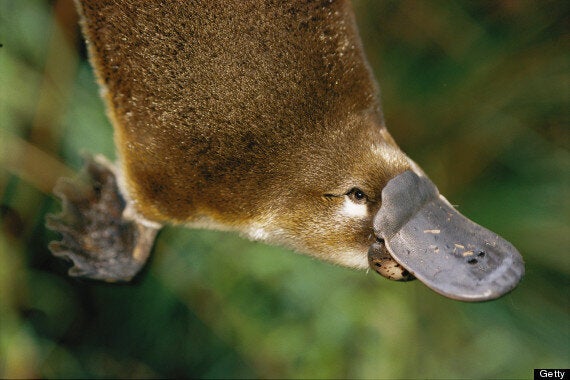Scientists have discovered the fossil of a giant duck-billed platypus, bringing to mind a more adorable version of Godzilla, waddling through downtown Tokyo.
Unlike its "small, furry and cute" modern-day counterpart, scientists say the now-extinct species would have been "positively dangerous".

The not very terrifying 'platypus-zilla'
Professor Mike Archer, from the University of New South Wales, described the animal as looking like a regular platypus "on steroids."
"lt pretty well blew our minds," he told ABC News.
With powerful teeth, the mis-matched mammoth creature roamed the rivers of northern Australia between five and 15 million years ago.

The evolutionary back-story of today's platypus is more complicated than was thought
Writing in the Journal of Vertebrate Paleontology, the researchers say the discovery suggests the evolutionary back-story of today's platypus is more complicated than was thought.
Prof Archer, from the University of New South Wales, told the BBC: "Suddenly up pops 'playtpus-zilla' - this gigantic monstrosity that you would have been afraid to swim with.
"It indicates there are branches in the platypus family tree that we hadn't suspected before."
"We'd never seen anything this big so it really knocked our socks off to think that platypus could get this big," he said.
Prof Archer joked that the discovery brought to mind a certain Crocodile Dundee scene.
"You can imagine the humorous scenes where somebody looks at the modern platypus and says 'That's not a platypus' and then picks up this monster and says 'That's a platypus'," he said, the Telegraph reported.

Scientists believe the creature was not an immediate ancestor of the existing platypus
All that was found of the new species, named Obdurodon tharalkooschild was a single giant tooth – the researchers believe it would have measured more than 1m long (3ft).
He went on to describe the ancient species in slightly terrifying terms, Sky News reported.
"We already know that the modern platypus has venom on the spurs of the hind leg that can be incredibly painful, that can stop a grown man in his tracks for hours," the scientist said.
"If you scale that up to perhaps two to three times the amount of venom in an animal much larger than that, you suddenly start thinking about this animal as a predator."
Bumps on its teeth and other fossil finds nearby suggest that the creature feasted on crustaceans, turtles, frogs and fish.
Although the area where the molar was found is a desert, millions of years ago it would have been covered in forest. The researchers think the beast would have spent its time in and around freshwater ponds.